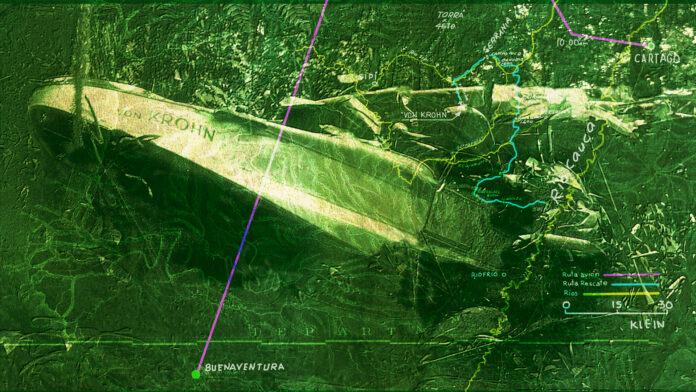Aviation history is full of fascinating stories, and one of them is the tragic crash of a Sikorsky S-38 amphibian plane in Colombia in 1934. The flight departed from Buenaventura with a German crew and a passenger, who was carrying mail and gold shipments to the Medellin Mint. Along the way, the plane made several stops, picking up and dropping off passengers, until it encountered terrible weather conditions in the mountains between Quibdó and Cartago. Despite the pilot’s efforts to avoid a head-on collision, the plane clipped a tree and crashed, killing one passenger and injuring the rest. The recovery of the wreckage has been a challenging and ongoing process, but it serves as a reminder of the risks and rewards of early aviation.
Departure from Buenaventura
On the morning of March 10, 1934, the Sikorsky S-38 amphibian plane was loaded with cargo, mail, and passengers, and prepared to depart from Buenaventura, a port city on the Pacific coast of Colombia. The plane was crewed by two Germans, the experienced pilot Hans Walter Geck and the mechanic/radio operator Ernest Jahnke, as well as a German passenger named Alexander Notz, who had previously served in the Colombian military aviation base in Buenaventura. Notz was accompanying a shipment of mail and gold to the Medellin Mint to be minted.
Departure from Chiquichoqui
The first stop on the trip was at Chiquichoqui, a small town on the San Juan River. There, the manager of the Chocó-Pacífico company, Mr. Newton C. Marshall, boarded the plane, along with two traveling agents of the Colombian Tobacco Company. Marshall was headed to Bogotá, the Colombian capital, while the agents were traveling to Quibdó, the capital of the Chocó intendancy, the next stop on the trip. In Quibdó, the two agents disembarked, and Julio Zúñiga, the accountant of the Intendancy, who was on his way to Medellín for medical treatment, boarded the plane.
Departure from Quibdó
After completing the necessary air mail and remittance exchange operations, the plane departed for Cartago in Valle del Cauca, the next stop on the journey. Navigational aids were scarce in those days, and the amphibian was equipped with only a communication radio that exchanged messages with the only two Scadta radio stations on the Colombian Pacific route.
Flight and Weather Conditions
As the Sikorsky S-38 flew, it encountered terrible weather conditions, with clouds covering the entire territory, forcing the plane to soar above the clouds. The pilot, Geck, relied on his experience to determine how long to follow this course, using a compass installed in the plane. Flying above the cloud cover, Geck was able to locate mountains through the cumulus clouds, navigating by the position of the sun when it shone through the clouds.
The Accident
However, when the clouds finally cleared, the pilot attempted to pass below the cloud cover and cross the depression into the Cauca Valley. The weather was still poor, with rain falling and visibility severely limited. Geck found himself flying in the middle of the mountains, in the rain and blind, when suddenly the left engine clipped a tree. The impact protected the cockpit, and only Zuniga was killed in the crash. Technician Notz was seriously injured, and Mr. Marshall escaped with severe shock, while pilot Geck and onboard mechanic Jahnke both suffered severe shock and apparently only minor injuries. They were stranded and left to their own devices, waiting for help to arrive from the outside.
Recovery of the Remains
The story of the search for the wreckage of the Sikorsky S-38 plane is ongoing. According to the description of both the survivor of the air disaster and the group that recovered the airmail and gold shipments, efforts are being made to locate the exact spot where the plane crashed, as it has been almost 90 years since the jungle overtook the area. Despite the challenging terrain and remote location in the region of Sipi in Choco, the search for the wreckage continues. Donations are needed to establish a relief fund for the recovery of the plane’s remains and to preserve its historical significance. The memory of the brave men aboard the ill-fated flight will live on as a testament to the pioneers of aviation and the challenges they faced.





